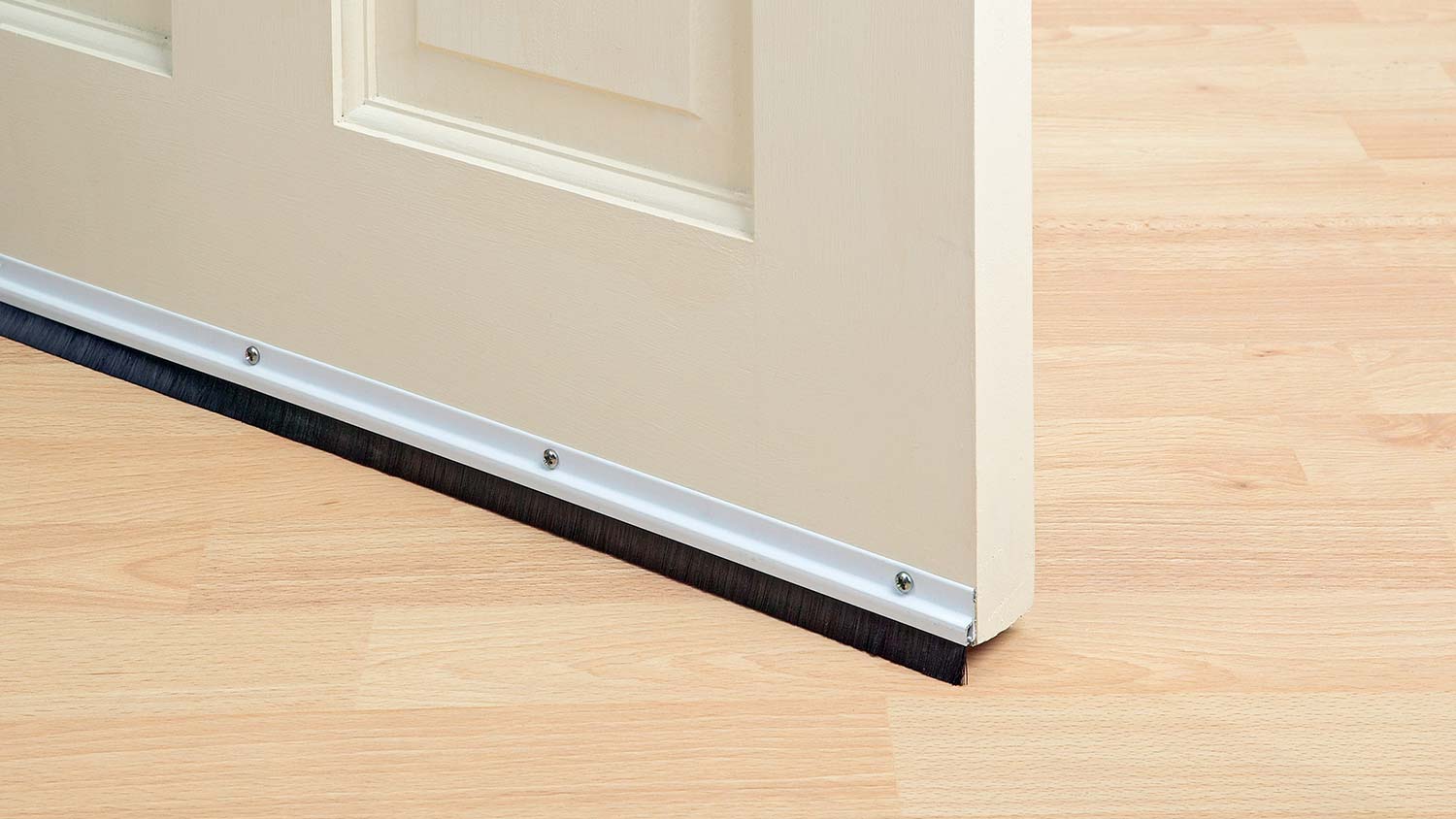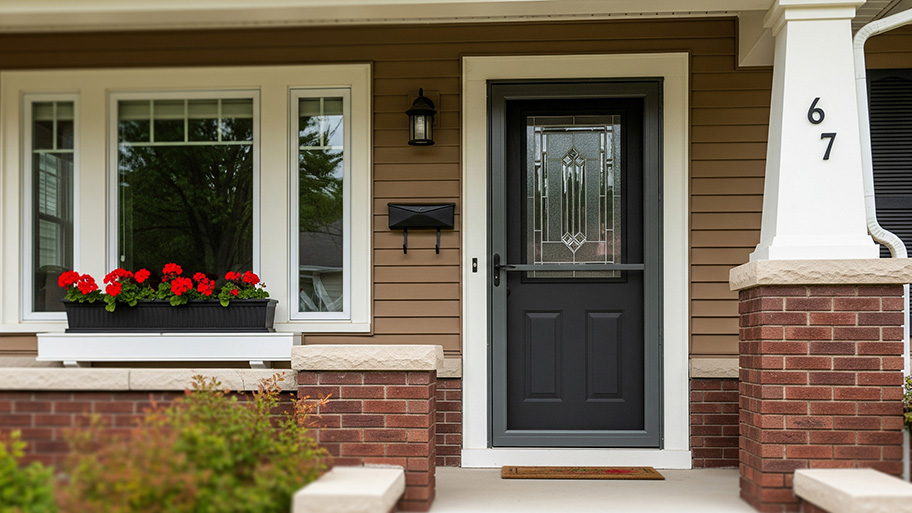
Are you looking to upgrade an old door in your home? Use this interior door installation cost guide to estimate the project's total cost and learn how to save.
Keep things sealed with a door sweep


Door sweeps attach to the bottom of a door to seal gaps and keep out air, moisture, and insects.
Sweeps come in different styles, types, and colors to fit flooring and blend with your door.
Most door sweep installations are DIYable, but some require door removal.
Door sweeps are small but mighty and keep your doors sealed from the elements outside. If you notice a cold draft in the winter or pesky pests in the summer, installing or replacing your sweep can do wonders. Before choosing one for your home, here’s everything you need to know about door sweeps.
A door sweep is also called a draft stopper because it helps keep unwanted drafts, debris, insects, and moisture from entering your home via the bottom of an exterior door. It’s a simple addition with many benefits, from increasing your home's energy efficiency to better soundproofing. You can choose from various door sweep types and materials.
Sealing gaps and weatherstripping can save up to 20% in annual energy bills according to the U.S. Department of Energy.
Here are the different door sweep types to choose from. They’ll all get the job done but differ by material, shape, and installation method. For complex installations, hire a door repair pro who can recommend materials and seal door gaps with a new door sweep.
Strip door sweeps are the most common type and are easily installed with either peel-and-stick adhesive or a screw-on mount. The mount is made of plastic or metal, often aluminum, with a vinyl strip.
Bristle door sweeps are a type of strip door sweep, but instead of a vinyl strip, they have nylon or PVC bristles. Vinyl sweeps create a stronger seal but require the floor to be flush. Bristle door sweeps are ideal for uneven floors because they conform to your flooring. The downside is that they may allow insects, air, and some moisture to seep through.
Under-door sweeps snap onto the bottom of your door and have several vinyl fins. Because of these fins, these sweeps provide some of the tightest seals. You can install them without hardware to seal smaller gaps than other sweep types.
They’re also not as obvious visually, so it’s a good option if you want a discreet sweep. Some models require you to remove the door before you install it, which is a more complicated process than installing a strip sweep.
Automatic sweeps, or spring-action sweeps, are installed on the interior of the home. A spring inside the door sweep moves it up and out of the way when you open the door, and the sweep lowers to the ground when you close the door. These seal gaps up to 1/2 inch and are made of aluminum and vinyl. Some models work on uneven floors.

Now that you have a better idea of the door sweep types, consider these additional factors before purchasing one.
Most door sweeps are installed on the side of the door that faces the exterior, although some models call for an interior installation. Check the information on the sweep model before you move forward, especially if you’re looking for the best seal possible. For the best results, look for a sweep that attaches to the exterior side.
You can easily trim door sweeps to fit your doorframe, but if you have a large, non-standard-sized door, measure it to make sure the sweep you want is long enough. Most sweeps are 36 inches long and can be trimmed for standard door sizes with a hacksaw.
Another measurement you need before buying a sweep is the space or gap between the bottom of your door and the ground. The manufacturer will specify the gap each model can seal, ranging from 3/8 to 1/2 inch.
Door sweeps are usually white, although they can also be black, silver, or bronze. Since sweeps are practical rather than decorative, the best option is a color that blends into your door.
The easiest DIY job is a peel-and-stick strip door sweep since you only need to press the adhesive against the door to install it. Otherwise, many sweep types require you to cut it to length with a hacksaw and use screws to secure the mount. This is a straightforward job for anyone familiar with basic tools.
On the other hand, if your sweep requires you to remove the door for installation, consider calling a door repair pro near you to help. Some doors are extremely heavy, and if you don’t have experience removing or installing doors, getting a pro to help will ensure the job is done safely.
From average costs to expert advice, get all the answers you need to get your job done.

Are you looking to upgrade an old door in your home? Use this interior door installation cost guide to estimate the project's total cost and learn how to save.

A storm door can protect your front door and let in more fresh air. Find out how much storm door installation costs for materials, labor, and more.

Sprucing up the barn or adding a rustic touch to your home? Use this guide to estimate barn door installation costs, so you can budget for your next project.

Slab and pre-hung doors are both excellent interior door choices. This guide compares the two based on essential factors in the decision-making process.

Get expert insights on sliding glass door repair cost, including average prices, key cost factors, and tips to save money on your next repair project.

Replacing the glass on a sliding door is a budget-friendly alternative to replacing the whole door itself. But is it a DIY project? Let's take a look.